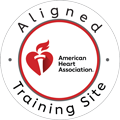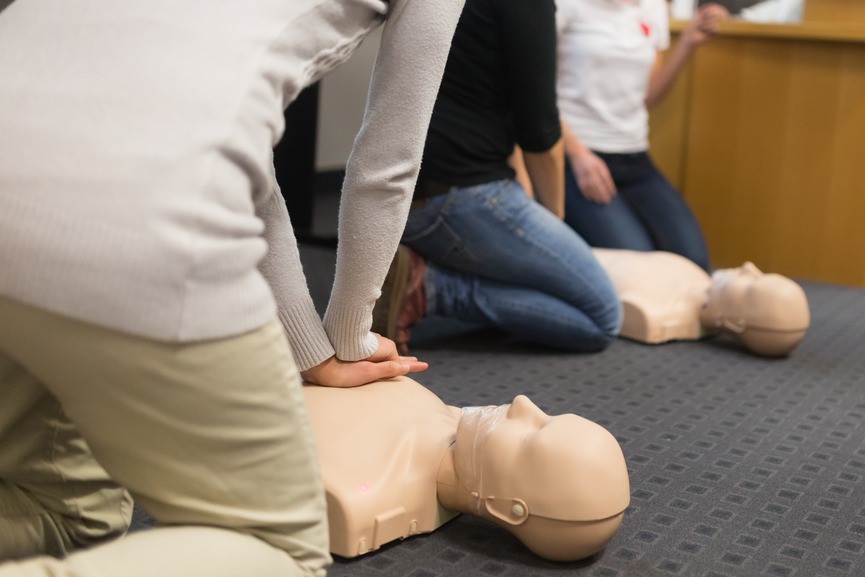Cardiopulmonary resuscitation (CPR) is a life-saving technique that plays a critical role in emergency situations where a person’s heart or breathing has stopped. CPR combines chest compressions and rescue breaths to manually maintain circulation and provide oxygen to the body, buying time until more advanced medical help can arrive. When performed correctly, CPR can significantly increase the chance of survival in cases of cardiac arrest, drowning, choking, or other life-threatening situations.
In this article, we will explore how chest compressions and rescue breaths work together in CPR, the proper techniques to perform them, and why mastering these skills is essential.
 What is CPR?
What is CPR?
CPR, which stands for Cardiopulmonary Resuscitation, is a technique used in emergencies to restore blood flow and oxygen to vital organs when a person’s heart or breathing has stopped.
Purpose of CPR
The primary goal of CPR is to keep oxygenated blood flowing to the brain, heart, and other vital organs until professional medical care can be provided.
Common Scenarios that Require CPR
Scenarios that commonly require CPR include heart attacks, sudden collapse due to cardiac arrest, near-drowning incidents, and choking, where the airway becomes blocked, cutting off oxygen supply. In such emergencies, CPR serves as the immediate intervention that can make the difference between life and death.
Chest Compressions: Restoring Blood Flow
Chest Compressions Purpose
The cornerstone of CPR is chest compressions. When the heart stops, blood circulation ceases, depriving the body’s organs, especially the brain, of oxygen. Chest compressions are designed to restore circulation by manually pumping blood through the heart and body.
Chest Compressions Technique
Hand Placement
Call Us Now
Get the Best CPR Class in Indianapolis Today!
To perform chest compressions effectively, rescuers must place their hands in the center of the victim’s chest, right between the nipples.
Compression Depth and Rate
The compression depth for adults should be about 2 inches or 5 cm, with a compression rate of 100-120 compressions per minute. This speed mimics the heart’s natural rhythm and ensures that blood is consistently pushed through the circulatory system.
Why Chest Compressions It’s Effective
- Chest compressions are effective because they imitate the natural action of the heart, helping to maintain blood flow to the organs.
- One of the most important aspects of performing chest compressions is ensuring they are uninterrupted.
- Studies have shown that frequent pauses in compressions reduce the likelihood of a positive outcome.
Maintaining proper body posture is crucial—rescuers should use their body weight to apply force rather than relying solely on arm strength.
This ensures that enough pressure is applied to move blood but minimizes the risk of rib fractures or other injuries, which can occur if excessive force is used.
Rescue Breaths: Providing Oxygen
While chest compressions maintain blood circulation, rescue breaths provide the oxygen necessary for survival. In many cases of cardiac arrest or respiratory failure, the body’s oxygen supply has been cut off.
Rescue Breaths Purpose
Rescue breaths are intended to reintroduce oxygen into the victim’s lungs, allowing it to enter the bloodstream and reach vital organs.
Rescue Breaths Technique
Opening The Airway
To perform rescue breaths effectively, rescuers must first open the victim’s airway using the head tilt-chin lift maneuver.
After ensuring the airway is clear, the rescuer pinches the victim’s nose and forms an airtight seal over their mouth, delivering two breaths after every 30 compressions.
Why Rescue Breaths It’s Effective
The effectiveness of rescue breaths lies in ensuring that enough oxygen reaches the lungs.
- Each breath should be sufficient to cause the chest to rise, signaling that air has entered the lungs.
- However, it is important not to over-ventilate by giving too much air or blowing too quickly, as this can cause complications such as gastric inflation, which can lead to vomiting or aspiration.
- Proper timing and breath volume are key factors in successful rescue breaths, ensuring that the victim receives the necessary oxygen without causing harm.
How Chest Compressions and Rescue Breaths Work Together
Chest compressions and rescue breaths work together in CPR to restore both circulation and oxygenation. The compressions ensure that blood continues to flow to the brain and heart, while the rescue breaths provide the oxygen that the blood carries to these vital organs.
Chest Compressions and Rescue Ratio
The 30:2 ratio, where rescuers alternate between 30 chest compressions and 2 rescue breaths, is the standard method for ensuring that the victim’s body remains both oxygenated and perfused. This combination of actions keeps the victim’s chances of survival as high as possible until more advanced interventions, such as defibrillation, can be performed.
Hands-Only CPR vs. Traditional CPR with Rescue Breaths
In recent years, Hands-Only CPR has gained popularity, especially for untrained rescuers. Hands-Only CPR involves performing chest compressions without rescue breaths and is recommended for use in cases of witnessed cardiac arrest, especially in adults. This method emphasizes continuous chest compressions, which are crucial for maintaining blood flow.
In contrast, traditional CPR with rescue breaths is still essential in certain cases, such as drowning or pediatric emergencies, where the cause of cardiac arrest is often respiratory. While Hands-Only CPR is easier to perform and has been shown to increase survival rates in certain situations, rescue breaths remain a vital component in specific cases.
When to Stop CPR
Knowing when to stop CPR is equally important. CPR should be continued until the victim begins to breathe or move, indicating recovery, or until emergency medical services (EMS) arrive and take over.
If a rescuer becomes physically exhausted and can no longer continue, it is acceptable to stop. If an automated external defibrillator (AED) becomes available, rescuers should follow the device’s prompts while continuing CPR until defibrillation is administered or professional care takes over.
Common Mistakes to Avoid
Like any life-saving technique, performing CPR correctly is critical to its success.
Common mistakes include incorrect hand placement, not pressing hard or fast enough during compressions, giving too many or too few rescue breaths, or failing to maintain the correct compression-to-breath ratio.
These errors can reduce the effectiveness of CPR and lower the victim’s chance of survival. Training is essential to avoid these mistakes, as proper practice allows individuals to respond quickly and correctly in real-life emergencies.
Conclusion
Understanding how chest compressions and rescue breaths work is crucial to saving lives in an emergency. Chest compressions help maintain blood flow to vital organs, while rescue breaths ensure oxygen reaches the lungs. Together, these steps provide a lifeline until advanced medical care is available, dramatically increasing a victim’s chances of survival. Mastering this life-saving technique is not just for medical professionals; anyone can learn and be prepared to step in when seconds count.
If you want to gain these essential skills and be ready to make a difference, consider enrolling in CPR certification in Indianapolis. Whether you’re a healthcare provider needing to meet job requirements or someone looking to be prepared for any emergency, CPR Indianapolis offers the best hands-on and stress-free training in the area. As an American Heart Association training site, we provide BLS, ACLS, PALS, and CPR and First Aid courses that meet the highest standards.
Don’t wait until an emergency happens—be proactive and get certified today! Visit CPR Indianapolis to find the right course for you and become confident in performing CPR. Sign up now and make sure you’re ready to save a life!


 What is CPR?
What is CPR?